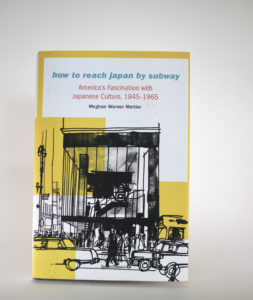
![]() This week my guest is Meghan Warner Mettler, who’s an assistant professor of history at Upper Iowa University. Meghan is the author of the recent book, How to Reach Japan by Subway: America’s fascination with Japanese Culture, 1945-65, published by Nebraska University Press. Meghan’s book is itself fascinating, charting as it does the many ways in which Americans eagerly embraced aspects of Japanese culture as part of the US’s post-war, 180-degree pivot in its attitude to Japan.
This week my guest is Meghan Warner Mettler, who’s an assistant professor of history at Upper Iowa University. Meghan is the author of the recent book, How to Reach Japan by Subway: America’s fascination with Japanese Culture, 1945-65, published by Nebraska University Press. Meghan’s book is itself fascinating, charting as it does the many ways in which Americans eagerly embraced aspects of Japanese culture as part of the US’s post-war, 180-degree pivot in its attitude to Japan.
During the second world war, Japan was the US’s mortal enemy, a reality conveyed in wartime propaganda that dealt in crude, even subhuman stereotypes of the Japanese. Post-war – in the new cold war era – Japan was a valued ally in the far east, and the old stereotypes were ditched in favour of new, more positive view of the people and their culture.
Political realities subtly shaped tastes and in the 1950s middle-class Americans began studying the Japanese art of flower arranging and bonsai cultivation, or attending Japanese movies in new art house cinemas, reading up about Zen Buddhism, or trying to reflect a Japanese design aesthetic in their homes.
In 1960 Donald Keene, professor of Japanese literature at Columbia University, wrote in the New York Times:
The craze for Japanese culture was selective, though; it represented a particular view of what Japan was, a very different view from the reality in the country that the US occupied until 1952 which was struggling to get back on its feet, to modernise, industrialise.
